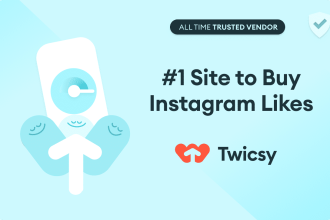The demand for mobile applications is constantly rising in today’s fast-paced digital world. With more and more people using their smartphones for various purposes, businesses must keep up by developing and launching their mobile apps. But does creating a mobile app have to be difficult and time-consuming? What if you could build apps with our templates? Can app templates help reduce the efforts required for creating mobile applications? Let’s dive into this topic and find out!
1. What Are App Templates?
App templates are pre-designed, customizable layouts that developers can use as a starting point for creating their own mobile applications. These templates come with built-in features, user interface (UI) elements, and design patterns, making it easier for developers to create fully functional apps without starting from scratch. By using app templates, developers can save time, effort, and resources, allowing them to focus more on the app’s unique features and functionality.
2. Advantages of Using App Templates
There are several advantages to using app templates when creating mobile applications, including:
- Time and cost savings: App templates significantly reduce the development time as most of the design and coding work has already been done. This translates to lower development costs and faster time-to-market for your app.
- Consistency and quality: Professionals design app templates, ensuring a consistent look and feel across different screens and devices. They also follow industry best practices, resulting in a high-quality user experience.
- Customizability: Although app templates come with pre-designed elements, they can be easily customized to match your brand and meet your specific requirements.
- Ease of use: App templates are designed to be user-friendly, making it easy for both experienced developers and beginners to work with them.
3. Are There Any Drawbacks to Using App Templates?
While app templates offer numerous benefits, there are some potential drawbacks to consider:
- Lack of uniqueness: Using a template may result in a less distinctive app, as other developers could use the same template. However, this issue can be mitigated through extensive customization.
- Limited flexibility: App templates may not always be able to accommodate specific requirements or unique features that your app needs. In such cases, you may need to work on additional custom development.
4. Choosing the Right App Template for Your Project
Selecting the right app template is crucial for the success of your mobile app project. To find the best match, consider the following factors:
- Compatibility: Ensure the template is compatible with the platforms (iOS, Android, etc.) you want to target.
- Functionality: Look for templates that offer the core features and functionality your app requires.
- Design: Choose a template with an appealing design that aligns with your brand and target audience.
- Customization: Ensure the template allows customization to make your app unique.
- Support: Opt for templates from reliable sources that offer ongoing support and updates.
5. A Real-World Example: AppMachine
One such platform that provides app templates is AppMachine. They offer various templates for various industries, making it easy for businesses to create mobile applications. Their website states, “Our templates are designed by professionals, following the latest design trends and guidelines. This ensures a great user experience and a polished look and feel for your app.”
App templates can significantly reduce the efforts required to create mobile applications, saving time and resources. However, choosing a suitable template and customizing it to match your unique requirements is important. Doing so can create a high-quality, engaging, and successful mobile app that stands out in the competitive app market.















